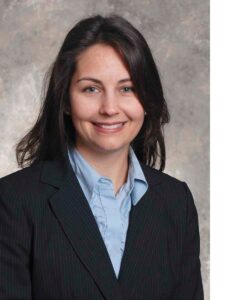I have a special fondness for donuts, although that wasn’t always the case. As a child, I found them too sweet. My mother was kind enough to take me to the donut shop early so we could buy some before they were glazed. Over time, I grew to like cake donuts, cinnamon sugar donuts and, now, love the traditional version, although I still scrape off a lot of the sugar. It must be hereditary because my eldest does not really like donuts either—yet. I really appreciate when our nursing team brings donuts in on Friday mornings.

Dr. Solow
It is the small things that matter. Big numbers like $3.7 billion in lobbying money1 or 10,000 bills introduced in the 117th Congress2,3 seem overwhelming and can get in the way of the things that matter more—the impacts on our practices and patients—which brings me back to donuts. Although the donuts do help my morale, they are probably not the healthiest way to prevent burnout.4
Advocacy may be one avenue that can help. What does it mean to lobby Congress? How will that help someone feel more empowered or experience less moral distress? During my tenure as chair of the ACR’s Government Affairs Committee (GAC), I’ve learned about the topsy-turvy rhythm of government, the role of lobbying firms, how laws are made and then interpreted on the administration side. Most importantly, I’ve learned that even a small voice—with persistence—can effect change over time. To some degree I’m preaching to the choir because you’re already reading this article, and maybe you like donuts, too. My hope is you will take this to heart and talk to your friends and colleagues about how advocacy can make a difference in the way we practice medicine and the way that we’re able to take care of our patients. We need much larger numbers lending their voices in small ways to help effect change.
Advocacy Highlights from 2022
We recently returned from lobbying Congress in September during our annual Advocates for Arthritis Hill Day, focusing on two main issues: step therapy and copay accumulator programs. In collaboration with the Committee on Research, we also met with the leadership team at the National Institute of Arthritis & Musculoskeletal & Skin Diseases (NIAMS) on strategic research goals and funding opportunities for rheumatology researchers.
In my final update to you as GAC Chair, I highlight several areas of active efforts with results to date.


